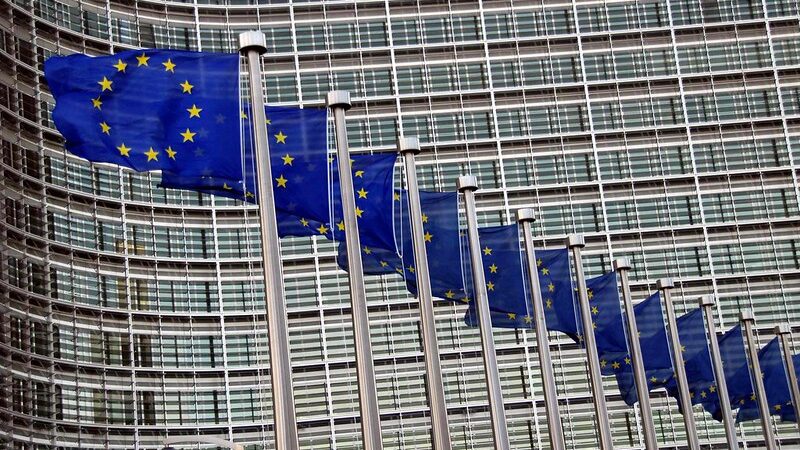When the pens went down on a new agreement to increase energy efficiency rates across the European Union, negotiators made an impact on millions of students, even if they weren’t aware of it.
The debate around energy efficiency is often confined to policymakers and industry experts rather than teachers and schoolchildren. But it remains the case that how we use energy is directly connected to how we work and how we learn.
In a busy classroom, energy efficiency offers students increased quality of life and improved learning environments. And schools will see lower energy bills, reduced carbon emissions, and more engaged teachers.
The political deal on a revised Energy Efficiency Directive (EED), reached in Brussels earlier this year, puts in place a compulsory target to reduce final energy consumption across the EU by 38% in 2030.
The increased target is a recognition of the progress made so far on energy efficiency – an average 29% reduction on projections for 2030. But it can also make a positive impact on education.
Ambitious target
The renewed ambition represents an awareness of the key role energy efficiency plays in hitting carbon targets, and specifically the EU’s ‘Fit for 55’ plan to cut emissions by 2030 by at least 55% compared to 1990 levels.
The new EED target translates into around 760 million tonnes of oil equivalent, a huge amount which will make a dent in the bloc’s significant reliance on imported fossil fuels.
Arianna Vitali, secretary-general of the Coalition for Energy Savings, a trade body, said there needed to be more assurances that the deal will be delivered on: “With energy saving becoming more and more essential to solve the energy security, affordability and climate challenges, member states must act fast to implement the revised provisions so that benefits for citizens and businesses can materialise,” she commented.
Efficient classrooms
What this all means for classrooms across Europe is now becoming clear. The deal includes a special provision for the public sector to lead the way in making fresh efficiency savings with a specific year-on-year target.
Member states will be required to renovate at least 3% of floor space owned by public bodies per year. This all adds up to a new and urgent charge to make energy savings across the European economy.
The impact on education could be huge. There are almost as many young people in education as there are adults in the workplace. But we provide more attention and investment to offices than to classrooms.
As a result classrooms are often inappropriately lit and deeply energy inefficient. Aside from the negative impacts on learning there are also health concerns. Research from the University of New South Wales has found the rates of myopia, in part caused by poor light exposure, are growing fast and could hit 50% of the global population by 2050.
Improving conditions
Signify, a global lighting company, has been researching the ways in which new lighting technologies can improve educational experiences for teachers and students alike.
This includes developing a product, called Interact, which connects LED lighting into one smart management system on the internet. The system provides insights into how spaces are used, when they are occupied, and at what room temperature.
Alongside using the latest LED technology, savings are made through using motion sensors and dimming lighting when necessary. The technology was deployed by the Eindhoven University of Technology in one of its buildings dating back to the 1960s and used by up to 4,000 people. The results were resoundingly positive: a 80% cut in carbon emissions and a 60% saving on energy bills.
The same technology fitted in a classroom can greatly impact how children concentrate, feel comfortable, and engage with a lesson. It does this by fine tuning existing LED lighting to the time of day and to appropriate levels, recreating the feeling of being outdoors.
Better learning
Research from the government of Hamburg found that installing such energy efficient lighting leads to significant payoffs in concentration, attention span, and behaviour. Over the course of one year, students were found to have a 35% increase in reading speed, a 45% decrease in the frequency of errors, and a 76% decrease in hyperactivity. This is compared to children using normal lighting.
Harry Verhaar, Signify’s head of global public and government affairs, explains, “Students switch off when they are forced to sit in classrooms which are either too dark or too bright for their needs. They are more tired, less attentive, and less willing to learn. Intelligent lighting systems can be adjusted to work for very different spaces, class sizes and with specific uses in mind. This technology offers young people a better start in education, and teaches them the benefits of energy efficiency from an early age.”
To date the uptake of smart lighting systems in educational buildings across Europe has been low. The revised EED could provide the market with a much-needed boost in the right direction, improving a whole generation of young people’s learning experiences.
The current generation of students will be the ones most affected by climate change. It is crucial we offer them a head start before going out into the world and upgrading their classrooms should be the first step. The scene is now set for businesses and governments to roll up their sleeves and take meaningful action.
This post was sponsored by Signify. See our editorial guidelines for what this means.
